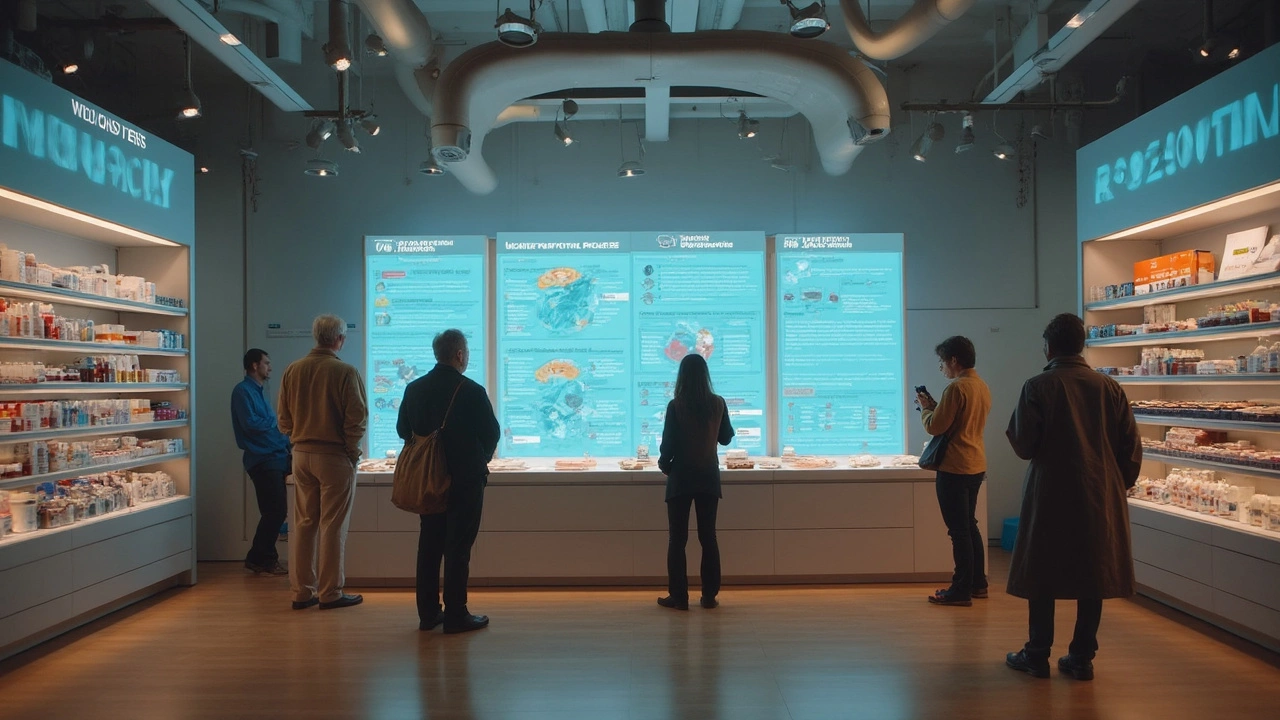If you or someone you know deals with seizures, you’ve probably heard the word “anticonvulsant.” It’s just a fancy term for medicines that help stop seizures before they start. These drugs aren’t only for epilepsy; doctors also prescribe them for nerve pain, bipolar disorder, and sometimes migraine prevention. Knowing the basics can make talking to your pharmacist or doctor a lot easier.
At their core, anticonvulsants calm down the brain’s electrical activity. Think of the brain as a crowded highway; when traffic gets too chaotic, a crash (seizure) can happen. These meds act like traffic cops, slowing down the speed or reducing the number of cars that cause jams. Different drugs take different routes: some boost the calming chemical GABA, others block sodium channels that fire too quickly, and a few adjust calcium flow. Because each pathway is unique, not every drug works for every person.
The most common anticonvulsants you’ll see are carbamazepine (Tegretol), valproate (Depakote), lamotrigine (Lamictal), and levetiracetam (Keppra). Your doctor picks one based on seizure type, age, other health issues, and how your body processes the drug. Side effects can range from mild drowsiness to more serious skin rashes or liver concerns. If you feel unusually sleepy, start tracking when it hits—sometimes taking the pill at night helps. Any rash that spreads quickly needs immediate medical attention.
Blood tests are a regular part of staying safe. Many anticonvulsants can affect liver enzymes or blood counts, so your doctor will likely ask for lab work every few months. Keep a simple log: note the dose, any new symptoms, and how you feel each week. This record makes it easy to spot patterns and discuss adjustments with your provider.
When you’re buying these meds, stick to reputable pharmacies—online or brick‑and‑mortar—that require a valid prescription. Look for pharmacy verification badges or ask the pharmacist about their sourcing process. If price is an issue, check if your insurance covers a generic version; generics work just as well and cost far less.
In daily life, pairing medication with lifestyle habits can boost seizure control. Regular sleep, balanced meals, and stress‑reduction techniques like short walks or breathing exercises all play a role. Avoid alcohol spikes, as it can interfere with drug levels and trigger seizures.
Bottom line: anticonvulsants are powerful tools, but they work best when you stay informed, keep up with check‑ups, and talk openly with your healthcare team. With the right approach, many people achieve stable seizure control and a normal routine.

Neurontin (Gabapentin) is commonly used for epilepsy and nerve pain, but it’s not the only option out there. This article explores eight different alternatives available in 2025, weighing their benefits and downsides. Whether you’re seeking different epilepsy treatments or exploring options for bipolar disorder, this guide will help you navigate your choices. Each option is described with practical pros and cons to help you make an informed decision.
As a blogger, I've been researching the potential long-term effects of Lisinopril usage. Lisinopril, an ACE inhibitor, is commonly prescribed to treat high blood pressure and heart failure. While it may be effective in managing these conditions, it's important to be aware of the possible long-term effects. Some studies suggest that prolonged use of Lisinopril could potentially lead to kidney impairment, electrolyte imbalances, and an increased risk of angioedema. It's crucial to discuss these risks with your healthcare provider and weigh the potential benefits and drawbacks of using this medication long-term.
Discover eight alternatives to rexmd.com for men's health solutions in 2024. This article explores a variety of telehealth services offering treatments for erectile dysfunction, hair loss, and other wellness issues. Each alternative provides unique features such as virtual consultations, discreet delivery, and comprehensive health services. Whether you seek the convenience of telehealth or prefer in-person consultations, explore the options that best suit your needs.
Generic medications save money but may contain different inactive ingredients that can trigger reactions in sensitive individuals. Learn what's really in your pills and how to protect yourself.
A side‑by‑side comparison of Nasonex with top nasal sprays, covering efficacy, onset, cost, and best‑use scenarios to help you choose the right allergy spray.
Explore the top alternatives to Canada Pharmacy Online in 2025, focusing on PocketPills among others. Discover the upsides and downsides of each alternative, including free delivery offers and app-managed prescriptions. This guide helps you make informed choices for your medication needs.